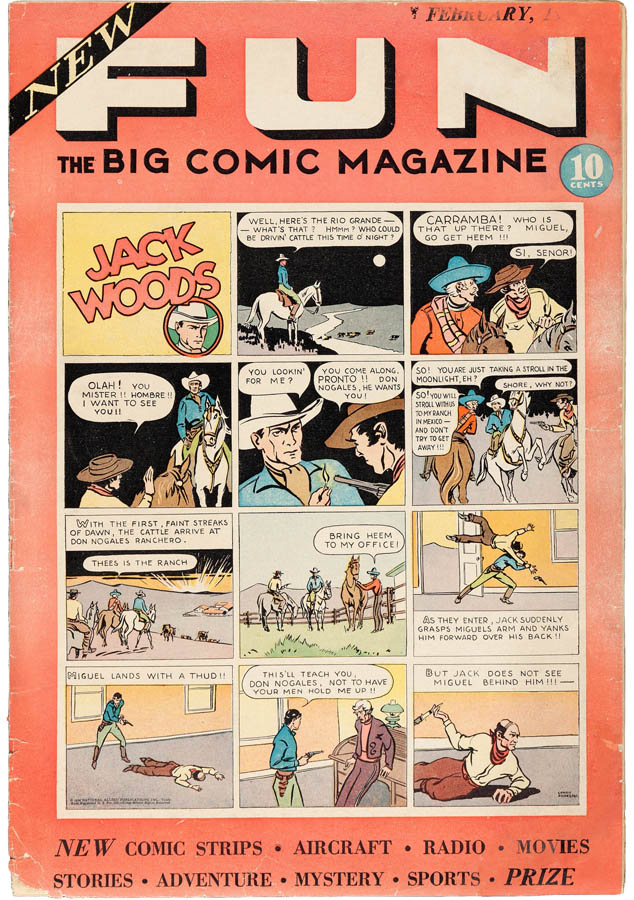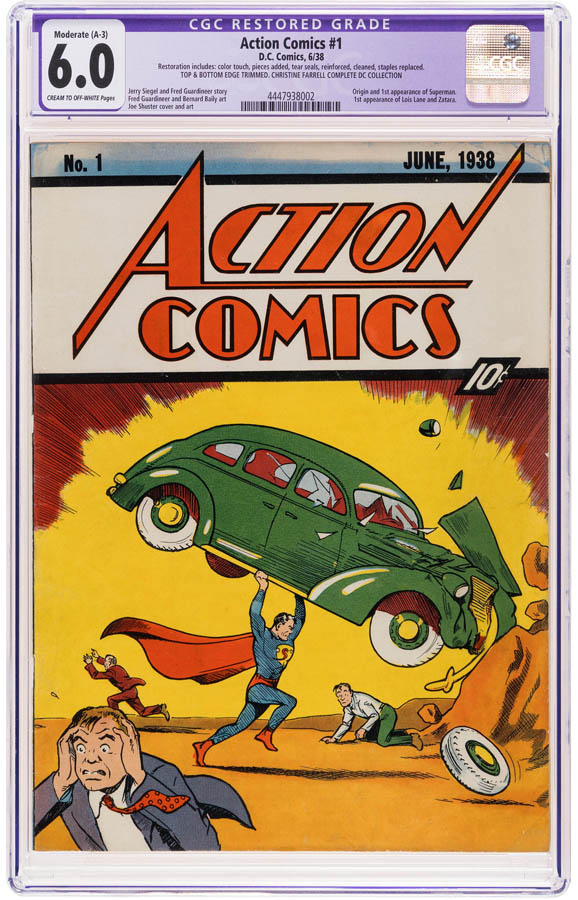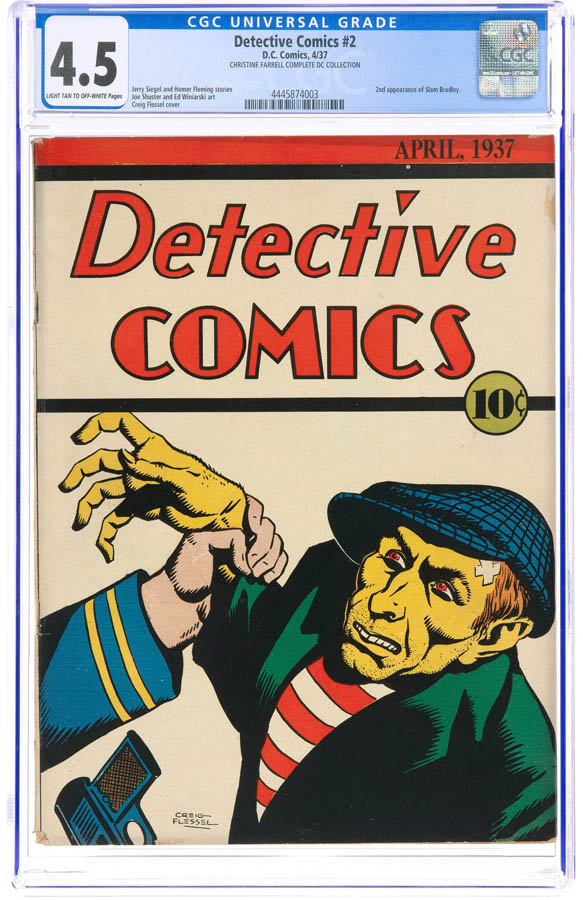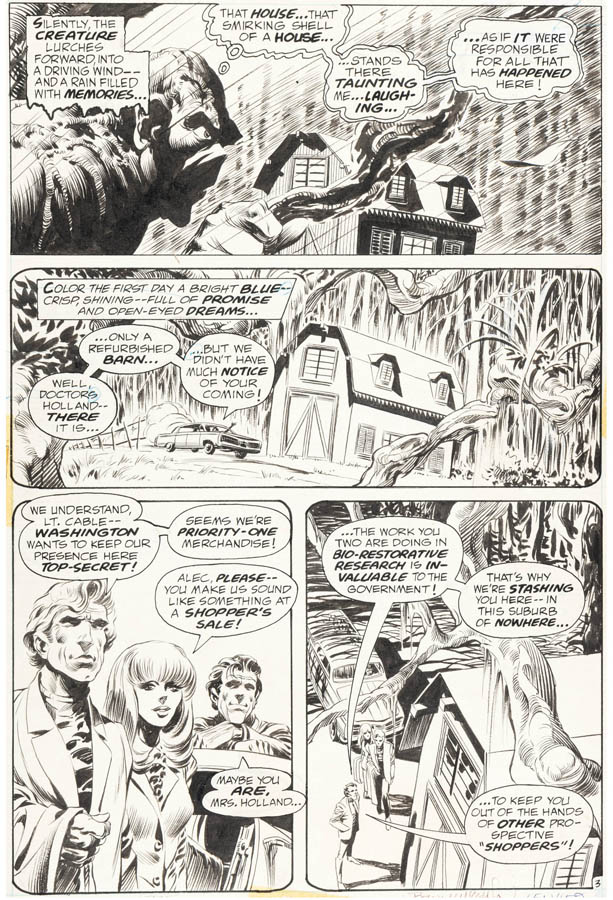CHRISTINE FARRELL SPENT DECADES ASSEMBLING A COMPLETE DC COMICS COLLECTION, INCLUDING SOME OF COMICDOM’S RAREST AND HIGHEST-GRADED TITLES
By Robert Wilonsky
The call came earlier this year. On one end was Lon Allen, a vice president at Heritage Auctions. On the other was an attorney who said she represented “a famous comic book collector with a house full of stuff.”
The attorney was vague during her half-hour conversation with Allen, offering only a few hints: The collector, who died in April of this year, was a woman. She owned a comic book shop. She had a vault in her basement. (“Yes,” Allen says now, with a small laugh. “An actual vault.”) And she was in Vermont.
Allen hung up and relayed the conversation with a colleague, who recalled meeting a comic-shop owner from Vermont at New York Comic Con years earlier. All they could remember was her first name: Christine. Allen asked Google to fill in the blank: “Christine comic collector Vermont.”
The response: Christine Farrell, who died in April and left behind one of the most famous, and mysterious, comic book collections ever assembled. For years she was a regular at NYCC, sitting with her longtime friend, comics dealer Joe Verenault. But few attendees knew who she was – or why she was there.
“Most people thought she was Joe’s mother or something because she would just sit there and not say anything,” Allen says. “And once she completed her collection, that was it. She was done.”
Christine Farrell surrounded by some of her prized comic books
In February 1983, the Associated Press profiled Farrell, describing her in the headline as a “comic-crazed collector” from Burlington, Vermont, who “lives in a land of simple truths, where swashbuckling superheroes match wits with the world’s most cunning criminals.” Farrell showed off a handful of first-edition treasures, including her Superman No. 1, but said she didn’t collect comics because they might one day become valuable. She just liked to read them.
“Everybody needs an outlet of some kind or other,” Farrell told the Associated Press. “You project yourself into a fantasy world where the superhero always wins. It’s an escape.”
Forty-one years ago, the AP reported that Farrell had about 8,000 comics “crammed into cartons stacked to the ceiling in an upstairs bedroom.” By the time she died, her collection had grown exponentially: In her basement vault and scattered throughout her house, Farrell left behind tens of thousands of books, among them nearly every single one DC Comics had ever published, beginning with 1935’s New Fun Comics No. 1 and including 1940’s Double Action Comics No. 2, of which there are only seven copies said to have survived.
Farrell’s collection dates back to 1935’s ‘New Fun Comics’ No. 1, the first DC comic book ever produced.
Farrell, who told the AP she funded her hobby “on the earnings of a family-owned bottling business,” began her quest in 1970 and completed it in 2007. Farrell even loaned her books to DC when they couldn’t find copies to make reprints. Yet outside of the AP profile and another by a small New York PBS outlet a decade later, Farrell granted few interviews and was never identified publicly as the keeper of this DC collection. Over time, her valuable and vaunted assemblage became “shrouded in mystery,” as the Vermont alternative weekly Seven Days wrote in 2022.
Now, that mystery is no more: From October 25-26, Heritage will present The Christine Farrell Complete DC Collection, an auction featuring nearly 500 comic books, including some of comicdom’s rarest, and works of original comic art, including a page from Swamp Thing No. 1. Heritage will present books from Farrell’s collection well into the summer of 2025.
“Her dedication was simply remarkable,” Allen says. “She did most of this pre-internet! Now, you could put that collection together in several years if you had the money. But back then, tracking down every book took real devotion. And she did not own a single graded or certified book. They were in mylar sleeves, in boxes, sometimes in piles. It was clear that she just wanted to read these books, no matter how many thousands of dollars they were worth.”
Farrell’s ‘Double Action Comics’ No. 2, from 1940, is one of only seven copies known to exist.
Allen sent those books from Farrell’s collection to Certified Guaranty Company – and many returned with some of the highest grades ever given to some of the Golden Age’s rarest and most sought-after books. Heritage began offering some of Farrell’s books at the end of September, including a Conserved Fine+ 6.5 copy of 1935’s New Comics that realized nearly $8,000.
“Her collection is already doing really well,” Allen says. “I knew it would, because it’s rare and fantastic.”
Among the highlights in Farrell’s collection is a copy of 1938’s ‘Action Comics’ No. 1, which kick-started the Golden Age of comics and introduced the world to Superman.
There are numerous Golden Age keys in this event, including restored copies of Action Comics No. 1 and Superman No. 1, a Fine+ 6.5 copy of Detective Comics No. 38 (Robin’s debut), a restored Very Fine- 7.5 All Star Comics No. 3 (the first appearance of the Justice Society of America) and a Very Good/Fine 5.0 copy of Flash Comics No. 1. But what’s most notable about Farrell’s collection are its numerous and estimable rarities, the books rated 8s, 9s and 10s in Ernst and Mary Gerber’s definitive Photo-Journal Guide to Comic Books’ Scarcity Index – those issues and titles seldom seen at auction or anywhere else.
That Double Action Comics No. 2 is such a rare book there has long been some disagreement about whether it was one of a handful of ashcan copies made “purely for trademark and copyright registration” (as DC noted in its 75th anniversary history The Art of Modern Mythmaking) or a limited-distribution test product made to see whether customers would buy black-and-white reprints of other comics. Farrell didn’t care either way: The book, deemed a 10 on the Photo-Journal Guide to Comic Books’ Scarcity Index, was a DC title, so it had to be in her collection, no matter how long it took to track it down.
‘The Photo-Journal Guide to Comic Books’ rates Farrell’s copy of ‘Detective Comics’ No. 2 a very-rare 9 on its Scarcity Index.
Here, too, are copies of Detective Comics No. 2 (a Very Good+ 4.5) and No. 3 (Good/Very Good 3.0), both of which The Photo-Journal Guide to Comic Books rates as very-rare 9s on its Scarcity Index. The former is one of only five unrestored copies Heritage has seen graded higher than Good- 1.8; the latter is so rare CGC has graded only 17 copies.
And despite Farrell’s desire to read rather than merely stash and store these books, many of her comics came back as some of the highest-graded copies on the CGC population reports, among them an All-Star Comics No. 32 graded Near Mint+ 9.6; an Action Comics No. 182 graded Very Fine/Near Mint 9.0; the sole copy of All-Flash No. 6 to come in at Near Mint- 9.2; and a Superman No. 49 graded Near Mint- 9.2. That is but a fraction of a fraction of the top-graded comic books in this historic event, beauties among the rarities, each desirable by casual collectors and completists for whom this auction will be the first – and, perhaps, last – chance to attempt to assemble a collection with Farrell’s fortitude and care.
Farrell’s collection also includes original comic art like this page from ‘Swamp Thing’ No. 1.
Verenault, who helped Farrell assemble her collection, says she seldom spoke of it publicly simply because “she was a very private person by her nature.”
Says Verenault, “Chris loved this particular company of comics, DC, and she did it for that reason alone. The fact that it turned out to be such a hard achievement and that they became staggeringly valuable was really secondary to her. But she was very, very pleased at how appreciated it was in the hobby that she had done such a thing.”
Yet even though she owned a beloved comic shop in Burlington called Earth Prime Comics, until now, the public has had no real idea of what she had accomplished.
Farrell was always adamant: “I do not intend to sell the collection,” she told a small PBS station in 1995 when its reporter traveled across Lake Champlain to interview her and browse the piles of history scattered around her house.
In truth, she loved the comic books more than how valuable they were. “That was the more important thing,” Verenault says.
As a result, says Lon Allen, who’s handled more comic books than a printing press: “This would have to be, by far, the best-assembled collection I’ve ever gone through.”
 ROBERT WILONSKY is a staff writer at Intelligent Collector.
ROBERT WILONSKY is a staff writer at Intelligent Collector.







